We have a few sky watchers in Litopia. I hope it is OK to share this here as we enter both the season and the story territory of Virgo, The Maiden in the Stars.
“The Virgin with her sheaf belongs to Ceres,” -The Astronomica, Manilius, 1st century AD.
This year, the sun enters the zodiac sun sign territory of Virgo, 22 August. Now it is harvest time in the northern hemisphere, - ‘the season of mists and mellow fruitfulness’ (From An Ode to Autumn by English poet John Keats.)
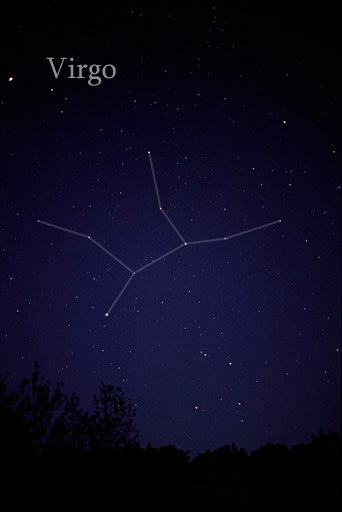
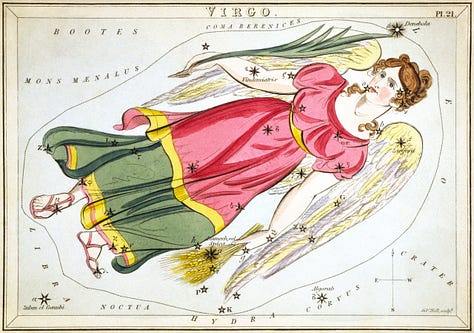
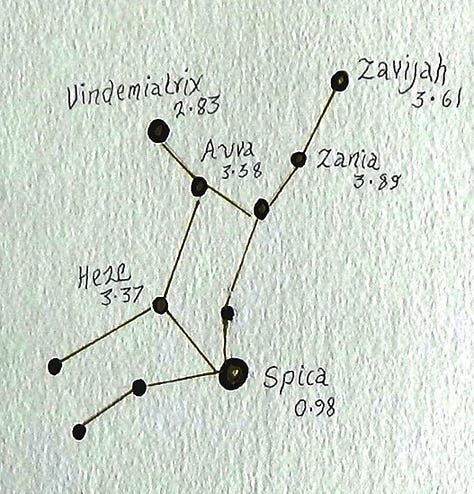
1) Constellation of Virgo, credit Till Credner, 2) Virgo, Urania's Mirror, Sidney Hall 3) stars of Virgo, writer's own diagram
It's a bit of a stretch, picturing a person. But add in a few more of her stars, and now we see her; Virgo, Isis, Demeter, Ceres; lounging semi-recumbent. She is also The Virgin Mary. In The Mazzaroth - the biblical astrology in the Book of Job, Virgo represents the seed of the woman, Messiah the Incarnate Son.
Virgo is dangling something in her left hand, represented by Spica, a blue-white giant star. Its name comes from the Latin, meaning an ‘ear of grain’- a sheaf of wheat. In Hindu mythology, Spica is associated with the goddess Lakshmi, symbolizing wealth, prosperity, and fertility. The brightest star in the constellation of Virgo, Spica is far brighter than our own sun, while the star Vindemiatrix, ‘the Grape-Gatherer,’ once seen at daylight, was the sign that now was the time to start the grape-picking.

Photo by Árpád Czapp on Unsplash
Planet Earth, aka Gaia, aka Terra, Home Sweet Home, belongs to something called The Virgo Supercluster. It’s mind-boggling to consider that our own Sun is just one star of the Milky Way, and the Milky Way is part of a collection of galaxies known as the Local Group. This contains three large spiral galaxies: the Milky Way, Andromeda, and the Triangulum Galaxy, as well as a few dozen dwarf galaxies. But The Local Group is only one member of the Virgo Cluster; a collection of 1200-2000 galaxies that stretch across 15 million light-years of space. And the Virgo Cluster is only one cluster in the Virgo Supercluster.
“The Virgo Supercluster is about 7,000 times the size of the Local Group, and 100 billion times that of the Milky Way. However, scientists now believe that the Virgo Supercluster is itself part of even larger structure dubbed Laniakea.
Laniakea includes the Virgo, Hydra-Centaurus and Pavo-Indus superclusters. And so it goes on…” SOURCE
To locate Virgo: https://www.youtube.com/watch?v=gSimh9Z8VDQ
And, aargh, get this. The Virgo Supercluster is just a run of the mill supercluster.
Just your average Joe, size-wise.
OMG.
So this is where we are right now. I might need to lie down again somewhere dark and quiet, dealing with the existential overload.

Photo by Kevin Quintino on Unsplash
The Virgo constellation is visible from all around the world. In the northern hemisphere, it's most visible in the evening sky from mid-March – the start of the planting season- to late June. In the southern hemisphere, look for it in the autumn and winter.
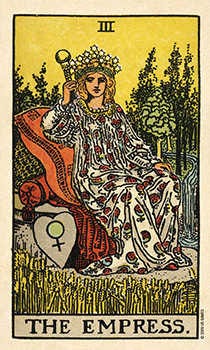
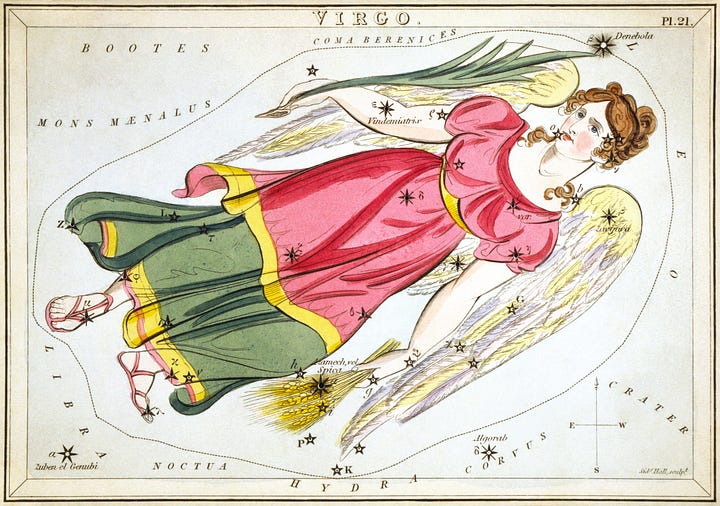
Smith Waite Centennial Tarot and Virgo from Urania's Mirror, Sidney Hall
The story of Virgo can be traced back, as so often, to the ancient stories coming out of Sumeria (modern Iraq) But these stories live on, even in space exploration. The Shala Mons is a mountain on Venus named after the goddess Shala, ancient Sumerian goddess of grain -and also compassion.
Why link these two things? Famine is suffering. A good harvest was seen as a blessing of the gods. What is planted in the spring must yield a crop in the autumn or famine follows. But this cannot be guaranteed from one year to the next. From early times, more than ten thousand years ago, Shala was associated with the constellation of Virgo, and vestiges of symbolism associated with her continue, such as the naming of Spica, the ‘ear of grain’, even as the deity's name changed from age to age, and culture to culture.
About ten centuries BC/BCE the Babylonians called part of this constellation, "The Furrow," again, referring back to Shala. While this is only one myth of the origin of Virgo, she is seen as a bringer of crops throughout all myths. In Egyptian mythology also, the arrival of Virgo in the night sky meant harvest time. Ceres (we think of the word ‘cereal’) or Demeter, the Greco-Roman goddess of the harvest, was the mother of Persephone.
A Dark and Twisted Virgo Love Story
When the maiden Persephone went missing one fine afternoon, out picking flowers, her frantic mother, the Earth goddess Demeter, went searching. No-one could help, that is, until the goddess Hekate, Hekate told Demeter that she had seen Persephone in the Underworld. there. Hekate, goddess of the crossroads, like Hermes/Mercury, was a psychopomp, an escort of the dead. These two were the only deities, apart from Hades himself, who could visit the Underworld at will. Hekate told Demeter that Hades had taken Persephone down there to live with him, and Persephone had been given no say in the matter.
Demeter went to Zeus, and demanded that Zeus order Hades to bring Persephone home, and when he didn't, she went on strike, and the harvests failed. The people and the livestock starved. Humanity might have perished altogether, had not Zeus finally intervened, sending Hermes to collect her and escort her safely home.
But now it became even more complicated. Hermes descended to the Underworld where he discovered Persephone, no longer a wretched, weeping, homesick girl. She had become a woman, a wife, the beloved queen of the dead in the Underworld, the apple of her husband’s eye, and he had built for her the most beautiful gardens he could contrive, with underground pools, and gems and stalactites.
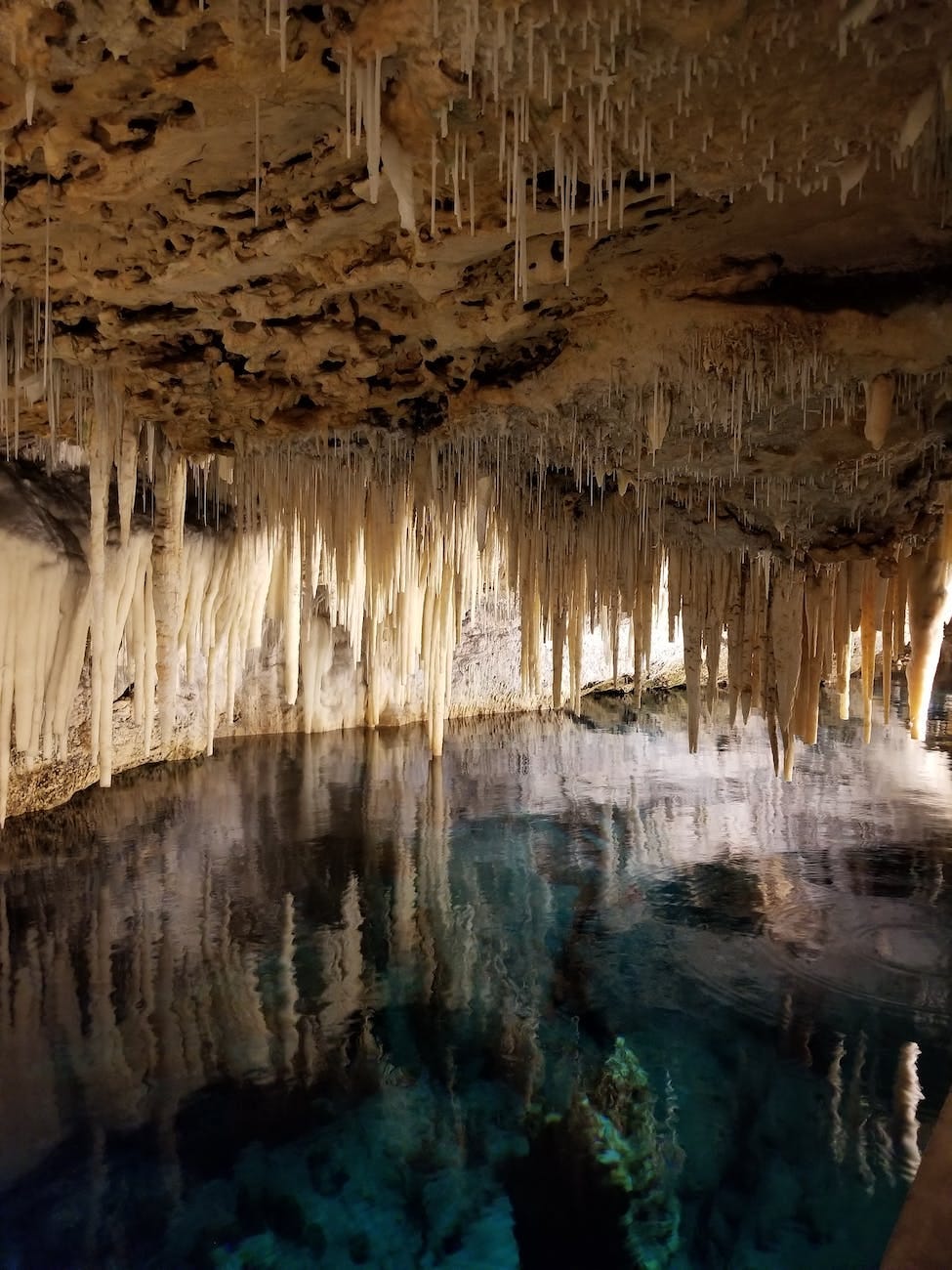
Photo by Jason Sun on Pexels.com
Tricky one! Persephone had grown to love Hades. But she missed her mother, Demeter, and she desperately missed the light, and if she hadn't developed the most almighty vitamin D deficiency by now, she was either eating plenty of fish, or the nutritionists don't know their stuff. So Hermes passed on the order from Zeus, and Hades agreed that Persephone could go home. But there were conditions. Hermes warned Persephone she must not eat again, not a thing, until she emerged from the Underworld.
Hades, however, had no intention of giving up Persephone, Zeus or no Zeus, and he gave her a handful of pomegranate seeds, knowing how much she loved them. A few seeds didn't count as food, he said. And Persephone believed him and ate some on her way home. Or who knows. Perhaps she knew perfectly well what he was up to.
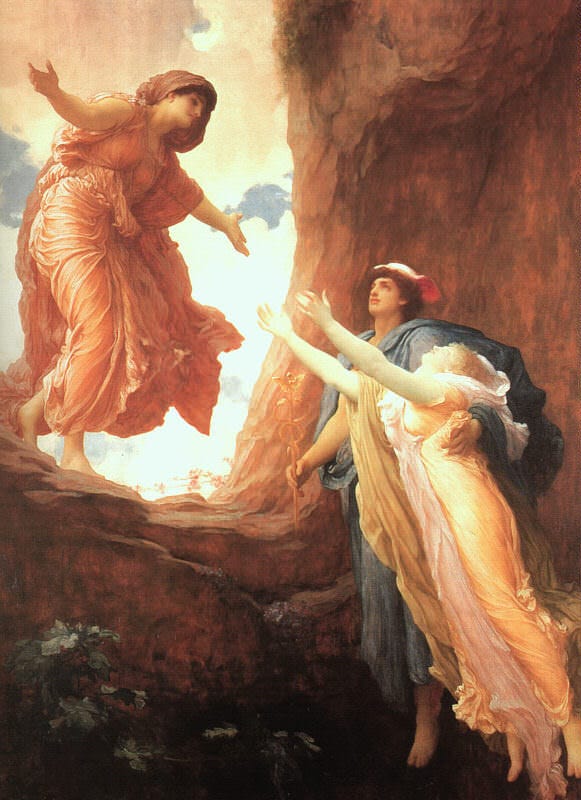
Painting by Frederick Leighton, Public Domain
Persephone went home to her mother. But a deal is a deal, and because she ate the pomegranate seeds, she returns to Hades and her life in the Underworld for four months of the year, and then Demeter mourns her child's absence, the winter returns and the land lies cold and fallow.
All zodiac signs are archetypes, meaning something that is considered to be a perfect or typical example of a particular kind of person, situation or thing.
The archetype of Virgo is the Craftsman, paying careful attention to every detail, taking pride in doing the job, whatever it is, to the highest standard possible. There's no substitute for skill and hard work, according to Virgo. If a job is worth doing, it is worth doing well.
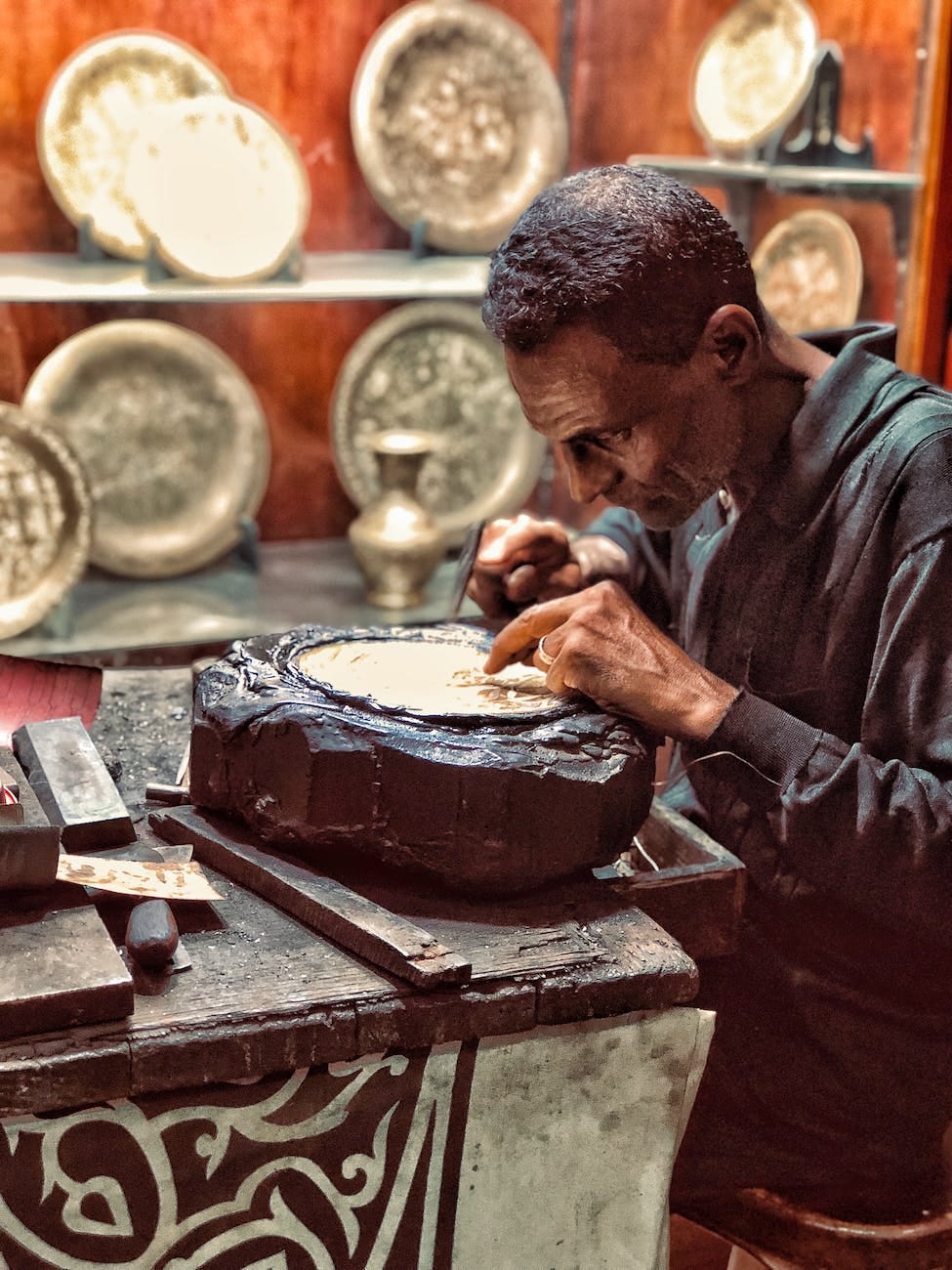
Photo by Ahmed Shahwan on Pexels.com
Virgo denotes a deep-rooted sense of connection to Nature. Here is wisdom, maturity and the value of solitude and self-sufficiency. The Hermit represents work and the principle of service – the desire to help Humanity. And often, animals. Virgo is ruled by agile Mercury, the fastest moving planet of travel, trade and communication. Virgo's brain is in overdrive most of the time, they can overwork things, although, being discerning, and analytical, they likely have a tendency to analyse you, and point out your strengths and also your mistakes and weaknesses.
This can undoubtedly be annoying, though it’s well meant. They may also give great advice, or make great beta readers or developmental editors because of those same analytical abilities.
Virgo is quiet, not flashy. But Virgo studies for the love of learning, and writes for the love of writing.
“The Virgin with her sheaf belongs to Ceres,” -The Astronomica, Manilius, 1st century AD.
This year, the sun enters the zodiac sun sign territory of Virgo, 22 August. Now it is harvest time in the northern hemisphere, - ‘the season of mists and mellow fruitfulness’ (From An Ode to Autumn by English poet John Keats.)
Astronomy



1) Constellation of Virgo, credit Till Credner, 2) Virgo, Urania's Mirror, Sidney Hall 3) stars of Virgo, writer's own diagram
It's a bit of a stretch, picturing a person. But add in a few more of her stars, and now we see her; Virgo, Isis, Demeter, Ceres; lounging semi-recumbent. She is also The Virgin Mary. In The Mazzaroth - the biblical astrology in the Book of Job, Virgo represents the seed of the woman, Messiah the Incarnate Son.
Virgo is dangling something in her left hand, represented by Spica, a blue-white giant star. Its name comes from the Latin, meaning an ‘ear of grain’- a sheaf of wheat. In Hindu mythology, Spica is associated with the goddess Lakshmi, symbolizing wealth, prosperity, and fertility. The brightest star in the constellation of Virgo, Spica is far brighter than our own sun, while the star Vindemiatrix, ‘the Grape-Gatherer,’ once seen at daylight, was the sign that now was the time to start the grape-picking.

Photo by Árpád Czapp on Unsplash
Planet Earth, aka Gaia, aka Terra, Home Sweet Home, belongs to something called The Virgo Supercluster. It’s mind-boggling to consider that our own Sun is just one star of the Milky Way, and the Milky Way is part of a collection of galaxies known as the Local Group. This contains three large spiral galaxies: the Milky Way, Andromeda, and the Triangulum Galaxy, as well as a few dozen dwarf galaxies. But The Local Group is only one member of the Virgo Cluster; a collection of 1200-2000 galaxies that stretch across 15 million light-years of space. And the Virgo Cluster is only one cluster in the Virgo Supercluster.
“The Virgo Supercluster is about 7,000 times the size of the Local Group, and 100 billion times that of the Milky Way. However, scientists now believe that the Virgo Supercluster is itself part of even larger structure dubbed Laniakea.
Laniakea includes the Virgo, Hydra-Centaurus and Pavo-Indus superclusters. And so it goes on…” SOURCE
To locate Virgo: https://www.youtube.com/watch?v=gSimh9Z8VDQ
And, aargh, get this. The Virgo Supercluster is just a run of the mill supercluster.
Just your average Joe, size-wise.
OMG.
So this is where we are right now. I might need to lie down again somewhere dark and quiet, dealing with the existential overload.

Photo by Kevin Quintino on Unsplash
The Virgo constellation is visible from all around the world. In the northern hemisphere, it's most visible in the evening sky from mid-March – the start of the planting season- to late June. In the southern hemisphere, look for it in the autumn and winter.
History & Mythology


Smith Waite Centennial Tarot and Virgo from Urania's Mirror, Sidney Hall
The story of Virgo can be traced back, as so often, to the ancient stories coming out of Sumeria (modern Iraq) But these stories live on, even in space exploration. The Shala Mons is a mountain on Venus named after the goddess Shala, ancient Sumerian goddess of grain -and also compassion.
Why link these two things? Famine is suffering. A good harvest was seen as a blessing of the gods. What is planted in the spring must yield a crop in the autumn or famine follows. But this cannot be guaranteed from one year to the next. From early times, more than ten thousand years ago, Shala was associated with the constellation of Virgo, and vestiges of symbolism associated with her continue, such as the naming of Spica, the ‘ear of grain’, even as the deity's name changed from age to age, and culture to culture.
About ten centuries BC/BCE the Babylonians called part of this constellation, "The Furrow," again, referring back to Shala. While this is only one myth of the origin of Virgo, she is seen as a bringer of crops throughout all myths. In Egyptian mythology also, the arrival of Virgo in the night sky meant harvest time. Ceres (we think of the word ‘cereal’) or Demeter, the Greco-Roman goddess of the harvest, was the mother of Persephone.
A Dark and Twisted Virgo Love Story
When the maiden Persephone went missing one fine afternoon, out picking flowers, her frantic mother, the Earth goddess Demeter, went searching. No-one could help, that is, until the goddess Hekate, Hekate told Demeter that she had seen Persephone in the Underworld. there. Hekate, goddess of the crossroads, like Hermes/Mercury, was a psychopomp, an escort of the dead. These two were the only deities, apart from Hades himself, who could visit the Underworld at will. Hekate told Demeter that Hades had taken Persephone down there to live with him, and Persephone had been given no say in the matter.
Demeter went to Zeus, and demanded that Zeus order Hades to bring Persephone home, and when he didn't, she went on strike, and the harvests failed. The people and the livestock starved. Humanity might have perished altogether, had not Zeus finally intervened, sending Hermes to collect her and escort her safely home.
But now it became even more complicated. Hermes descended to the Underworld where he discovered Persephone, no longer a wretched, weeping, homesick girl. She had become a woman, a wife, the beloved queen of the dead in the Underworld, the apple of her husband’s eye, and he had built for her the most beautiful gardens he could contrive, with underground pools, and gems and stalactites.

Photo by Jason Sun on Pexels.com
Tricky one! Persephone had grown to love Hades. But she missed her mother, Demeter, and she desperately missed the light, and if she hadn't developed the most almighty vitamin D deficiency by now, she was either eating plenty of fish, or the nutritionists don't know their stuff. So Hermes passed on the order from Zeus, and Hades agreed that Persephone could go home. But there were conditions. Hermes warned Persephone she must not eat again, not a thing, until she emerged from the Underworld.
Hades, however, had no intention of giving up Persephone, Zeus or no Zeus, and he gave her a handful of pomegranate seeds, knowing how much she loved them. A few seeds didn't count as food, he said. And Persephone believed him and ate some on her way home. Or who knows. Perhaps she knew perfectly well what he was up to.

Painting by Frederick Leighton, Public Domain
Persephone went home to her mother. But a deal is a deal, and because she ate the pomegranate seeds, she returns to Hades and her life in the Underworld for four months of the year, and then Demeter mourns her child's absence, the winter returns and the land lies cold and fallow.
The Virgo Archetype/Story character
All zodiac signs are archetypes, meaning something that is considered to be a perfect or typical example of a particular kind of person, situation or thing.
The archetype of Virgo is the Craftsman, paying careful attention to every detail, taking pride in doing the job, whatever it is, to the highest standard possible. There's no substitute for skill and hard work, according to Virgo. If a job is worth doing, it is worth doing well.

Photo by Ahmed Shahwan on Pexels.com
Virgo denotes a deep-rooted sense of connection to Nature. Here is wisdom, maturity and the value of solitude and self-sufficiency. The Hermit represents work and the principle of service – the desire to help Humanity. And often, animals. Virgo is ruled by agile Mercury, the fastest moving planet of travel, trade and communication. Virgo's brain is in overdrive most of the time, they can overwork things, although, being discerning, and analytical, they likely have a tendency to analyse you, and point out your strengths and also your mistakes and weaknesses.
This can undoubtedly be annoying, though it’s well meant. They may also give great advice, or make great beta readers or developmental editors because of those same analytical abilities.
Virgo is quiet, not flashy. But Virgo studies for the love of learning, and writes for the love of writing.



